This brief tutorial shows students and new users how to install the Snipe-IT Asset Management platform on Ubuntu 18.04 | 16.04 with an Apache2 HTTP server.
Snipe-IT is a free, open-source IT asset management system written in PHP.
Installing Snipe-IT with Apache on Ubuntu Linux allows you to manage your IT assets easily using the Snipe-IT platform. Apache is a popular web server required by Snipe-IT, and Ubuntu is a widely used Linux distribution.
Following the steps outlined in the tutorial, you can quickly set up Snipe-IT on your Ubuntu server with Apache and start managing your IT assets with its user-friendly portal and intuitive dashboard.
For more on Snipe-IT, please visit its home page
To get started with installing Snipe-IT, follow the steps below:
Install Apache HTTP
Apache2 HTTP Server is the most popular web server, so install it since Snipe-IT needs it.
To install Apache2 HTTP on the Ubuntu server, run the commands below.
sudo apt update sudo apt install apache2
After installing Apache2, the commands below can stop, start, and enable the Apache2 service to always start up with the server boots.
sudo systemctl stop apache2.service sudo systemctl start apache2.service sudo systemctl enable apache2.service
To determine if the Apache2 HTTP server is installed, open your web browser and type in the server’s IP or hostname.
When you see a page similar to the one below, Apache2 is installed and working.
http://localhost
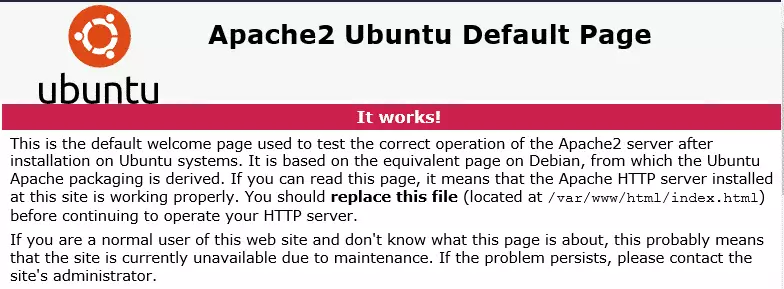
Install MariaDB Database Server
Snipe-IT also needs a database server to store its content. The MariaDB database server is a great place to start when looking at open-source database servers with Snipe-IT.
To install MariaDB, run the commands below.
sudo apt install mariadb-server mariadb-client
After installing MariaDB, the commands below can stop, start, and enable the service to start when the server boots.
Run these on Ubuntu
sudo systemctl stop mariadb.service sudo systemctl start mariadb.service sudo systemctl enable mariadb.service
After that, run the commands below to secure the MariaDB server by creating a root password and disallowing remote root access.
sudo mysql_secure_installation
When prompted, answer the questions below by following the guide.
- Enter current password for root (enter for none): Just press the Enter
- Set root password? [Y/n]: Y
- New password: Enter password
- Re-enter new password: Repeat password
- Remove anonymous users? [Y/n]: Y
- Disallow root login remotely? [Y/n]: Y
- Remove test database and access to it? [Y/n]: Y
- Reload privilege tables now? [Y/n]: Y
Restart MariaDB server
To test if MariaDB is installed, type the commands below to log on to the MariaDB server.
sudo mysql -u root -p
Then, type the password you created above to sign on. If successful, you should see a MariaDB welcome message.
Install PHP 7.2 and Related Modules
PHP 7.2 may not be available in Ubuntu default repositories. To install it, you will have to get it from third-party repositories.
Run the commands below to add the below third party repository to upgrade to PHP 7.2
sudo apt-get install software-properties-common sudo add-apt-repository ppa:ondrej/php
Then update and upgrade to PHP 7.2
sudo apt update
Next, run the commands below to install PHP 7.2 and related modules.
sudo apt install php7.2 libapache2-mod-php7.2 php7.2-common php7.2-gmp php7.2-curl php7.2-intl php7.2-mbstring php7.2-xmlrpc php7.2-mysql php7.2-gd php7.2-bcmath php7.2-xml php7.2-cli php7.2-zip php7.2-sqlite
After installing PHP 7.2, run the commands below to open the PHP default config file for Apache2.
sudo nano /etc/php/7.2/apache2/php.ini
Then, save the changes on the following lines below in the file. The value below is an ideal setting to apply in your environment.
file_uploads = On allow_url_fopen = On short_open_tag = On memory_limit = 256M upload_max_filesize = 100M max_execution_time = 360 max_input_vars = 1500 date.timezone = America/Chicago
After making the change above, please save the file and close it.
To test PHP 7.2 settings with Apache2, create a phpinfo.php file in the Apache2 root directory by running the commands below
sudo nano /var/www/html/phpinfo.php
Then, type the content below and save the file.
<?php phpinfo( ); ?>
Save the file. Then browse to your server hostname followed by /phpinfo.php
http://localhost/phpinfo.php
You should see the PHP default test page.
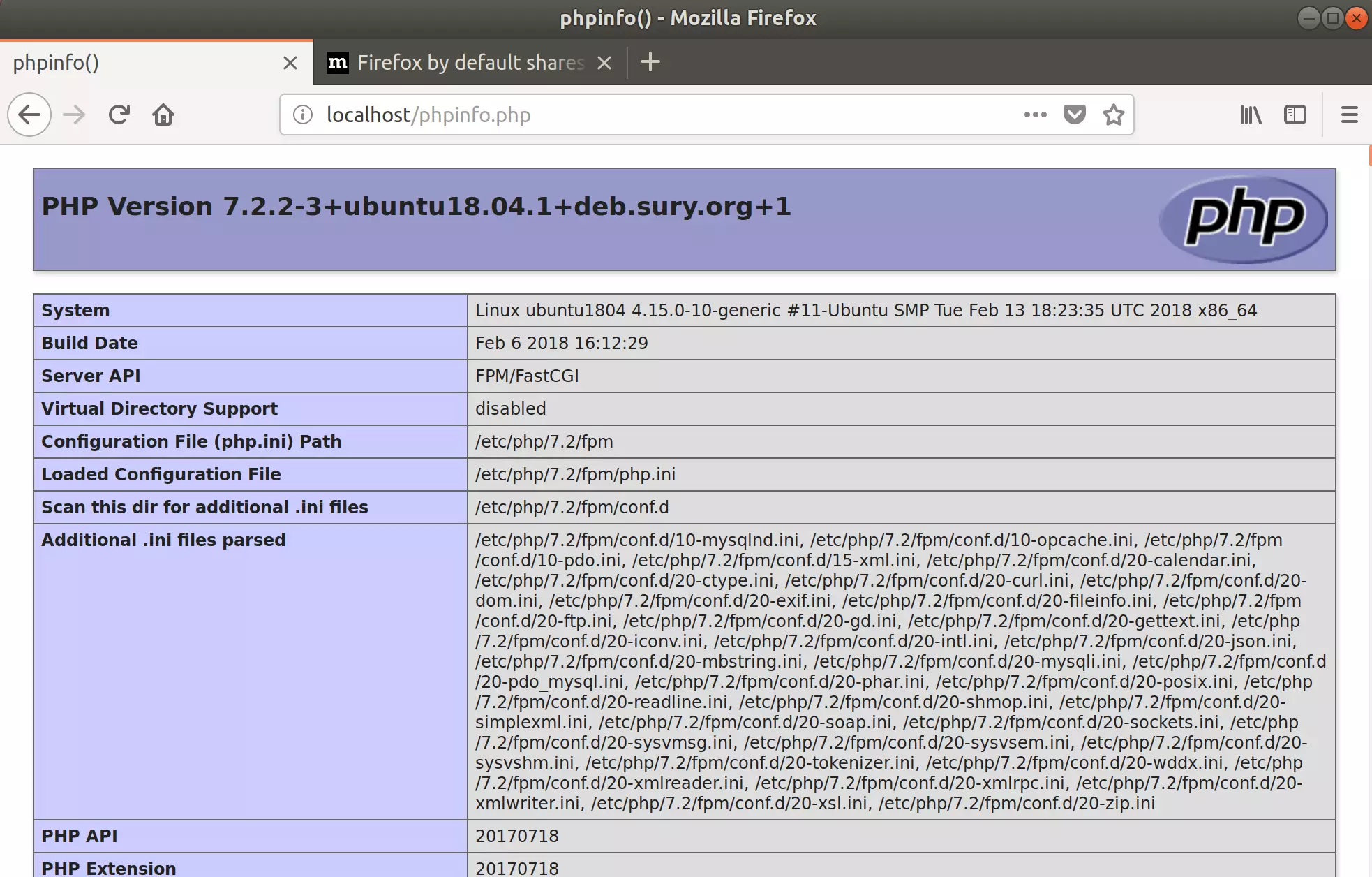
Create Snipe-IT Database
Now that you’ve installed all the required packages continue below to start configuring the servers. First, create a Snipe-IT database.
Run the commands below to log on to MariaDB. When prompted for a password, type the root password you created above.
sudo mysql -u root -p
Then, create a database called snipeit
CREATE DATABASE snipeit;
Create a database user called snipeituser with a new password
CREATE USER 'snipeituser'@'localhost' IDENTIFIED BY 'new_password_here';
Then, grant the user full access to the snippet database.
GRANT ALL ON snipeit.* TO 'snipeituser'@'localhost' WITH GRANT OPTION;
Finally, save your changes and exit.
FLUSH PRIVILEGES; EXIT;
Download Snipe-IT Latest Release
You may want to use the GitHub repository to get Snipe-IT’s latest release. Install Composer, Curl, and other dependencies to get started.
sudo apt install curl git curl -sS https://getcomposer.org/installer | sudo php -- --install-dir=/usr/local/bin --filename=composer
After installing curl and Composer above, change into the Apache2 root directory and download Snipe-IT packages from Github.
cd /var/www/ sudo git clone https://github.com/snipe/snipe-it snipeit sudo cp /var/www/snipeit/.env.example /var/www/snipeit/.env
Next, edit the .env file created above and make the highlighted changes to suit your environment.
sudo nano /var/www/snipeit/.env
Make the highlighted changes.
# -------------------------------------------- # REQUIRED: BASIC APP SETTINGS # -------------------------------------------- APP_ENV=production APP_DEBUG=false APP_KEY=ChangeMe APP_URL=example.com APP_TIMEZONE='UTC' APP_LOCALE=en MAX_RESULTS=500 # -------------------------------------------- # REQUIRED: DATABASE SETTINGS # -------------------------------------------- DB_CONNECTION=mysql DB_HOST=127.0.0.1 DB_DATABASE=snipeit DB_USERNAME=snipeituser DB_PASSWORD=type_password_here DB_PREFIX=null DB_DUMP_PATH='/usr/bin' DB_CHARSET=utf8mb4 DB_COLLATION=utf8mb4_unicode_ci # -------------------------------------------- # OPTIONAL: SSL DATABASE SETTINGS
Save the file and exit.
Next, return to the Snipe-IT root directory and update all packages via Composer.
cd /var/www/snipeit sudo composer install --no-dev --prefer-source
From the Snipe-IT directory, run the commands below:
sudo php artisan key:generate
It should prompt and show you an application key.
**************************************
* Application In Production! *
**************************************
Do you really wish to run this command? (yes/no) [no]:
> yes
Application key [base64:6KnX/HGkNNcUGw2uucxBKT8+OwQ58yBp7vfa7sfwpDg=] set successfully.
Since you just ran the web server as root, you should ensure the www-data user and group own any newly created files.
To do that, run the commands below:
sudo chown -R www-data:www-data /var/www/snipeit/ sudo chmod -R 755 /var/www/snipeit/
Configure Apache
Finally, configure the Apahce2 site configuration file for Snipe-IT. This file will control how users access Snipe-IT content. Run the commands below to create a new configuration file called snipeit.conf.
sudo nano /etc/apache2/sites-available/snipeit.conf
Then copy and paste the content below into the file and save it. Replace the highlighted line with your domain name and directory root location.
<VirtualHost *:80>
ServerAdmin [email protected]
DocumentRoot /var/www/snipeit/public
ServerName example.com
ServerAlias www.example.com
<Directory /var/www/snipeit/public/>
Options +FollowSymlinks
AllowOverride All
Require all granted
</Directory>
ErrorLog ${APACHE_LOG_DIR}/error.log
CustomLog ${APACHE_LOG_DIR}/access.log combined
</VirtualHost>
Save the file and exit.
Enable the Snipe-IT and Rewrite Module
After configuring the VirtualHost above, please enable it by running the commands below.
sudo a2ensite snipeit.conf sudo a2enmod rewrite sudo systemctl restart apache2.service
Then open your browser and browse to the server domain name or hostname. This is often localhost but can be a hostname or IP address. Your server admin or hosting company will have this information available.
http://example.com/
Continue with the installation wizard, validate that all requirements are met, and continue.
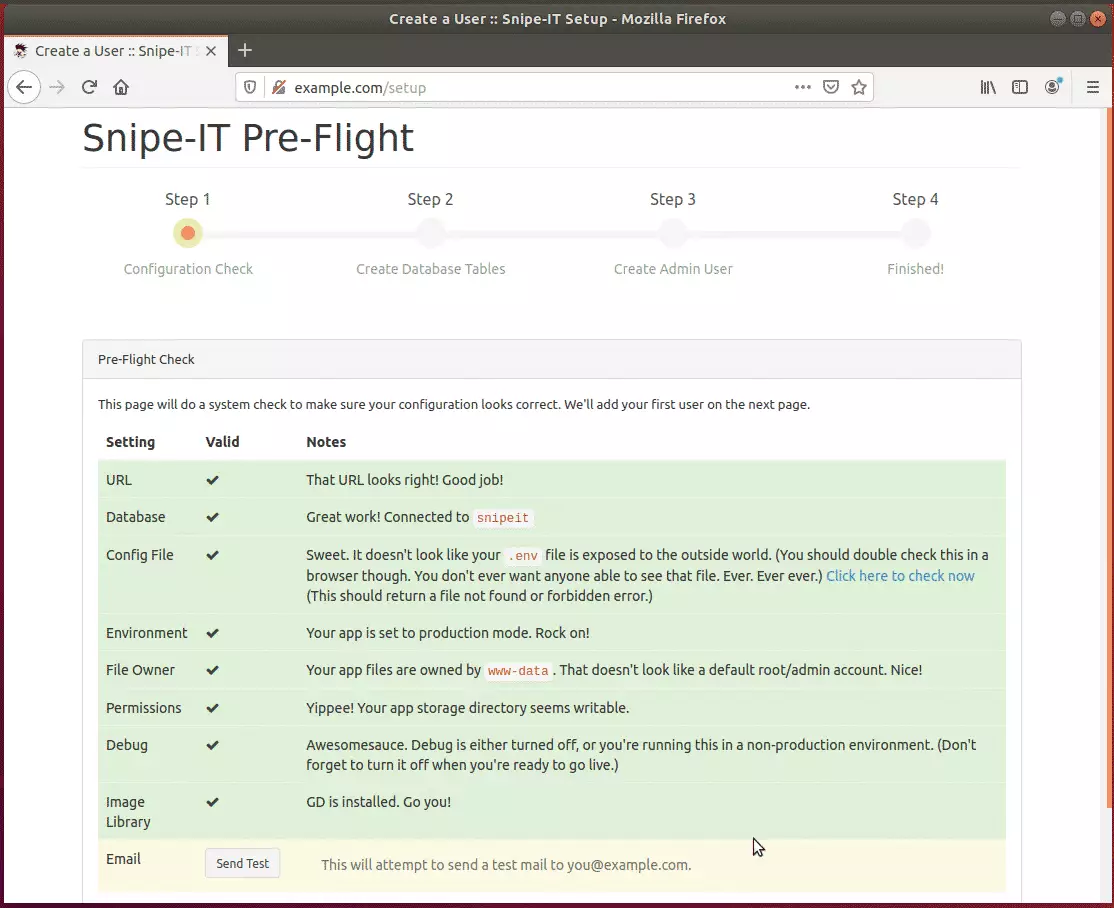
Next, create a system admin account to manage the platform.
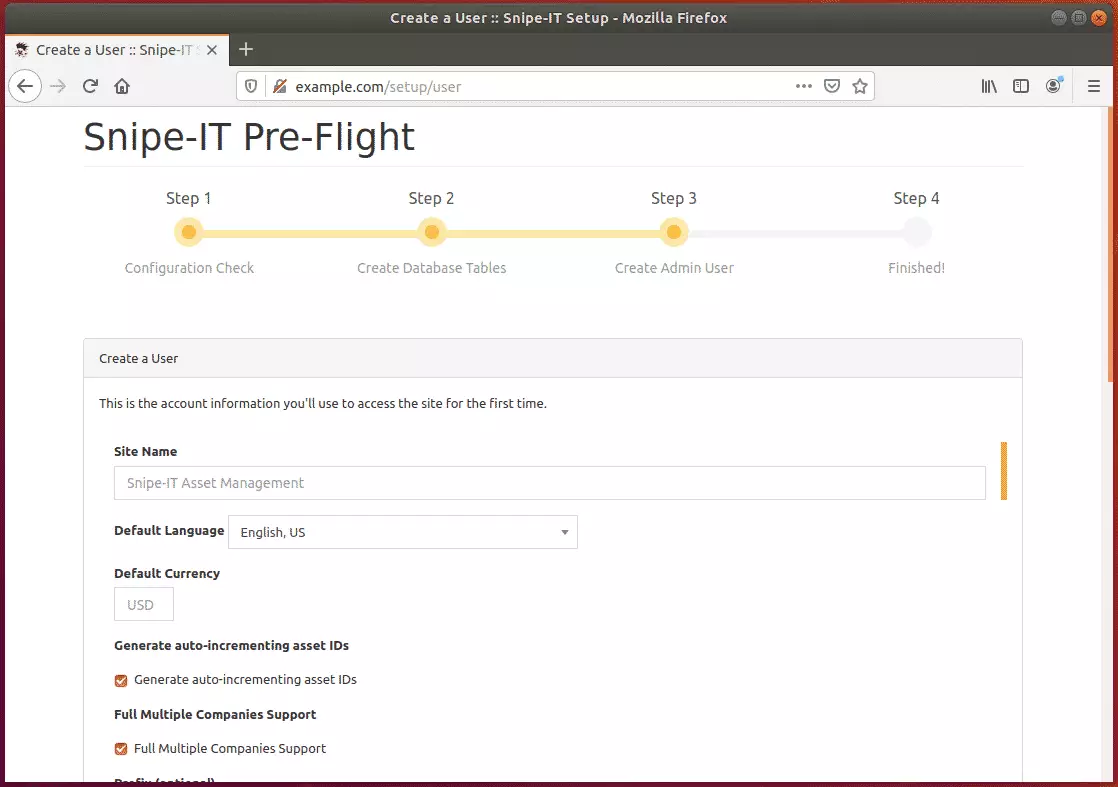
After installing, log in and start to begin managing your IT assets.
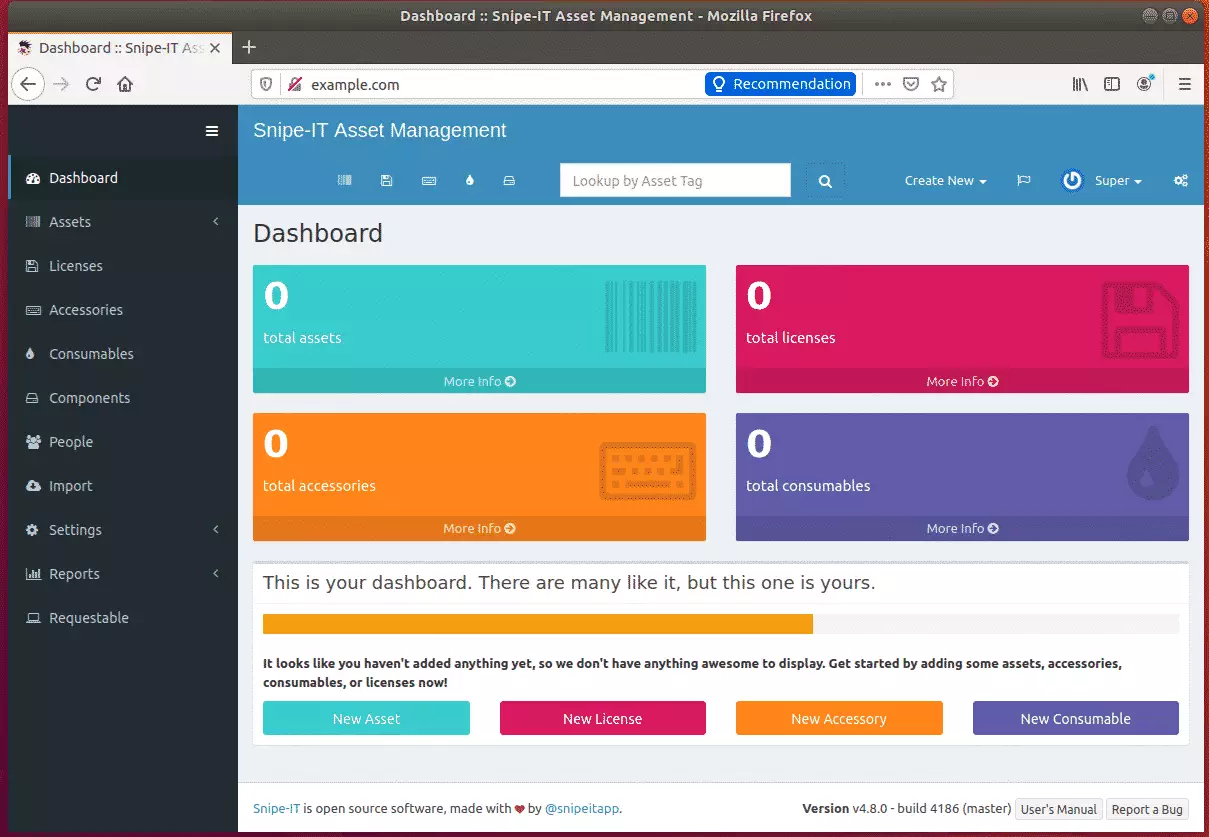
Conclusion:
You have learned how to install Snipe-IT on Ubuntu with an Apache2 HTTP server. If you find any errors above, please leave a comment below.
Thanks,

Leave a Reply